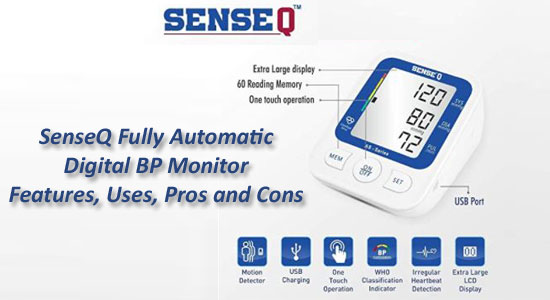Key Takeaways:
- Exploration of the cutting-edge scientific breakthroughs in mRNA vaccine technology.
- Detailed insights into the rapid development, rigorous testing, and production process under GMP manufacturing.
- Discuss the economic, public health, and logistical challenges and triumphs seen with mRNA vaccine distribution.
- Prospects for mRNA technology in treating various diseases beyond its use in vaccines.
Table of Contents:
- Introduction
- The Science Behind mRNA Vaccines
- Real-World Success Stories: mRNA Vaccines in Action
- The Manufacturing Process of mRNA Vaccines
- Scaling Up: The Logistics of Mass Producing mRNA Vaccines
- Global Distribution and Accessibility Challenges
- mRNA Vaccines: Misinformation and Public Trust
- Advancements in mRNA Therapeutics Beyond Vaccines
- Economic Impact of mRNA Vaccine Development
- Looking Forward: The Future of mRNA Technology in Healthcare
Introduction
The emergence of mRNA vaccine technology is a beacon of innovation in medical Science. This remarkable advance has given us a paradigm shift in our approach to vaccination and disease prevention. At the core of this revolution lies a nuanced and elegant scientific concept, leveraging the body’s mechanisms to defend against pathogens. The journey of mRNA vaccines from the labs to public deployment encapsulates a story of ingenuity, speed, and hope.
The development of mRNA vaccines has brought forth a platform capable of rapid adaptation to address various infectious diseases, offering a remarkable response time from identifying the pathogen to distributing a preventative solution. This has demonstrated robust potential against emerging and reemerging diseases, fundamentally altering the trajectory of public health policies and practices. As we delve further into the Science and implications of these vaccines, a window into a new era of preemptive healthcare is opening before us, heralding an age where responsiveness and skill in the face of health crises become the new standard.
The Science Behind mRNA Vaccines
The integration of GMP manufacturing with this technology exemplifies a union of scientific know-how and rigorous safety standards, ensuring that each vaccine reaching the public is potent and safe. Unveiling the mechanics of mRNA vaccine technology reveals its true ingenuity. These vaccines deliver a complex yet precise set of instructions to host cells, teaching them to produce a protein that initiates a strong and targeted immune response. This in situ protein synthesis process, emulating the natural infection process without the risk, allows for an unprecedented specificity in immune defense. The production of vaccines through this method underscores a leap from the empirical approaches of traditional vaccines to a rational design more akin to software engineering, where updates and modifications can be made swiftly and effectively.
The benefits of such technology are multifold. Traditional vaccines often rely on weakened or dead pathogens or protein subunits. Still, with mRNA vaccines, no live components of the virus are necessary, dramatically reducing the risks of adverse reactions. Moreover, the nature of the mRNA platform permits rapid adaptability; hence, new virus strains, for instance, can be addressed promptly with updates to the vaccine’s mRNA sequence. This flexibility is integral in the fight against quickly mutating viruses and is a testament to modern vaccine science’s transformative potential.
Real-World Success Stories: mRNA Vaccines in Action
The global fight against COVID-19 has provided an unparalleled demonstration of the efficacy and utility of mRNA vaccines. The remarkable speed with which these vaccines were developed, tested, and authorized for emergency use is a testament to a decade’s worth of foundational research reaching fruition. Public health strategies greatly benefited from the agility of this technology, as the vaccines proved vital in curtailing the spread of the virus and reshaping the pandemic’s trajectory. This real-world evidence validates mRNA vaccines’ power in providing a swift, agile, and robust tool in the public health arsenal. This approach is revolutionary in managing infectious disease outbreaks.
As we reflect on the success of these vaccines, it is evident that the blueprint for responding to future pandemics has been indelibly altered. The precedent set by mRNA technology provides a tangible proof-of-concept. It lays the groundwork for a more resilient public health system capable of preemptive action against potential pandemics, significantly reducing the worldwide societal and economic impact of infectious diseases.
The Manufacturing Process of mRNA Vaccines
The manufacturing saga of mRNA vaccines is a narrative of scientific detail, precision, and commitment to quality. The seamless integration of state-of-the-art technological processes with rigorous Good Manufacturing Practice (GMP) guidelines ensures the vaccines are produced under stringent conditions — a reassurance of their safety and efficacy. The synthesis begins with generating the mRNA strands, which undergo purification and encapsulation in lipid nanoparticles, forming the core of vaccine delivery.
A relentless pursuit of excellence governs each step throughout the manufacturing process, from inception to packaging. Quality control teams vigilantly monitor and verify the fidelity of the mRNA sequences and integrity of the nanoparticles, thus guaranteeing the final product meets all required standards. This scrupulous attention to detail throughout the GMP pipeline upholds the trust placed in these groundbreaking medical interventions by healthcare providers and recipients alike.
Scaling Up: The Logistics of Mass Producing mRNA Vaccines
Mass-producing mRNA vaccines is a complex orchestration that requires harmonizing scientific, industrial, and logistical elements. Scaling up production from a research setting to global distribution is fraught with challenges, most notably ensuring the constancy of vaccine quality at scale. Bio-manufacturing facilities worldwide have risen to the challenge, employing innovative technologies and processes that enable them to produce millions of vaccine doses.
A shared sense of urgency and cooperation among various sectors characterizes the expansion of mRNA vaccine production. It’s a concerted effort that merges the expertise of biotech firms, the oversight of health regulatory authorities, and the support of governmental and non-governmental organizations. The collaboration between different stakeholders is evidence of a collective resolve to harness scientific innovation for the greater good, culminating in a substantial contribution to global public health.
Global Distribution and Accessibility Challenges
The story of mRNA vaccines doesn’t end with their manufacturing; it extends into the complex web of global distribution. Ensuring that these vaccines are readily available to all corners of the world is a logistical challenge, compounded by the need for specialized cold chain storage. These hurdles are particularly pronounced in regions with limited infrastructure, where maintaining the vaccine’s integrity from production to administration is formidable.
In this space, ingenuity again surfaces, drawing on packaging, transportation, and storage advancements to navigate these constraints. The challenges of equitable distribution raise critical ethical questions about access to healthcare. The global community is called to action, innovating solutions and policies that aim to bridge gaps in accessibility and deliver on the promise of mRNA vaccines as a boon for all of humanity.
MRNA Vaccines: Misinformation and Public Trust
In a world saturated with instantaneous digital communication, the rapid dissemination of misinformation has posed new challenges for public health initiatives. Despite their effectiveness, mRNA vaccines have not been immune to the spread of myths and disinformation. Addressing the hesitancy and skepticism requires transparent, evidence-based communication strategies and grassroots education efforts by health experts and community leaders. This proactive engagement with the public is essential to demystify the Science behind vaccines and bolster public confidence in their use.
The integrity of public health information is a pillar of effective healthcare strategy. Mitigating the impact of misinformation on vaccine uptake is critical to achieving widespread immunity. By cultivating an informed public anchored in Science and reason, health authorities can work towards a society that trusts the transformative potential of mRNA vaccines, leading to better health outcomes and resilience against disease.
Advancements in mRNA Therapeutics beyond Vaccines
mRNA technology is a burgeoning field not limited to prophylactic vaccines. Its potential extends into a broad spectrum of therapeutic applications, poised to tackle some of humanity’s most intractable diseases. This emerging realm of mRNA therapeutics holds promise for personalized medicine, enabling treatments tailored to the genetic makeup of individuals and revolutionizing our approach to a host of illnesses.
The ability of mRNA to instruct cells to produce therapeutic proteins offers new avenues in the fight against genetic diseases, cancer, and chronic conditions. Research in this domain is vibrant and rapidly evolving, supported by a collaborative scientific community that shares knowledge and tools, expediting the development of potentially life-saving treatments. This convergence of shared vision and innovation is driving progress in a field that aims to reshape the very fabric of medical treatment.
Economic Impact of mRNA Vaccine Development
The drive toward developing mRNA vaccines has brought about significant economic repercussions, from bolstering the biotechnology sector to stimulating global markets. The investment in mRNA vaccine research and development has not only led to the creation of a new class of medical products. Still, it has also fueled economic growth and job creation in a sector poised for expansion. These developments encapsulate the broader economic benefits that arise when public health priorities align with industry and innovation.
As the world has witnessed, rapid vaccine development can soothe economic uncertainties tied to global health crises. The biotech industry’s critical role in the pandemic response has emphasized the necessity of continued investment and support for future innovation. This synergy between health advancement and economic stability is a powerful engine driving societal well-being and resilience.
Looking Forward: The Future of mRNA Technology in Healthcare
As the curtain rises on the future of mRNA technology, the stage is set for its potential to be fully realized in healthcare. The ongoing research and development are paving the way for breakthroughs beyond vaccines, including targeted treatments for complex diseases, which could redefine the prospects of personalized medicine. With continuous advancements, the mRNA platform may soon become a cornerstone in our therapeutic toolset, combating various illnesses with precision and efficacy.
The future of mRNA technology hinges on the dedication and ingenuity of the next generation of scientists and clinicians. Renowned mRNA technology pioneers armed with insights and expertise will shape the trajectory of medical interventions. Their work, underscored by a commitment to innovation and public health, holds the potential to foster an era of unparalleled advancements in the fight against disease, improving lives and safeguarding communities around the globe.

Anjali is the owner of the https://indiacsr.in/ , https://businessnewsthisweek.com/ and https://www.digitalsmagazine.com/ website. Her creative ideas, passion, and enthusiasm can be seen in her articles. Keep in touch with her for more interesting and helpful articles…….








